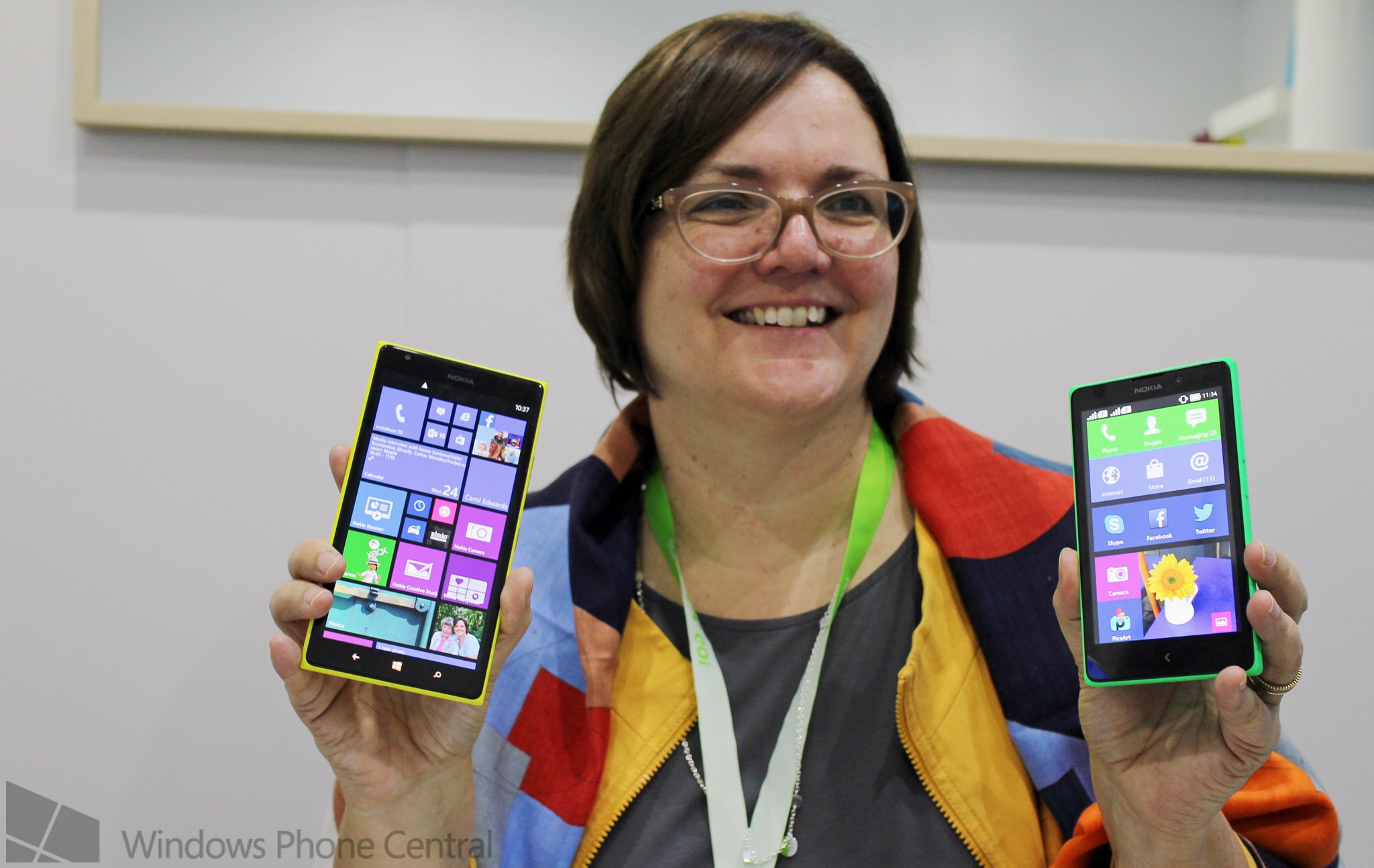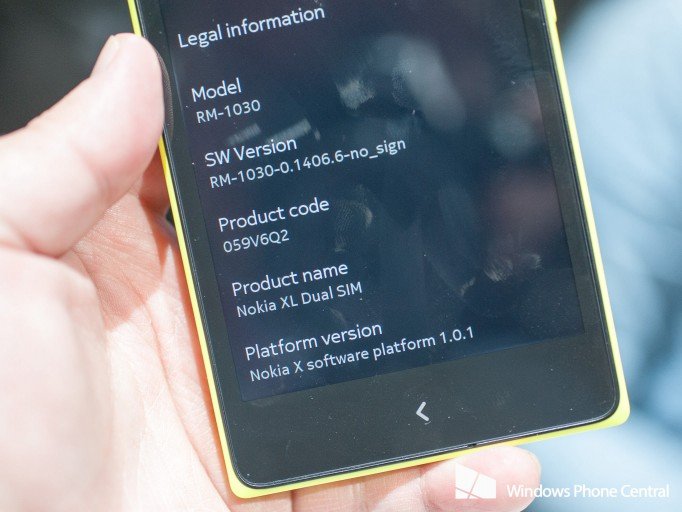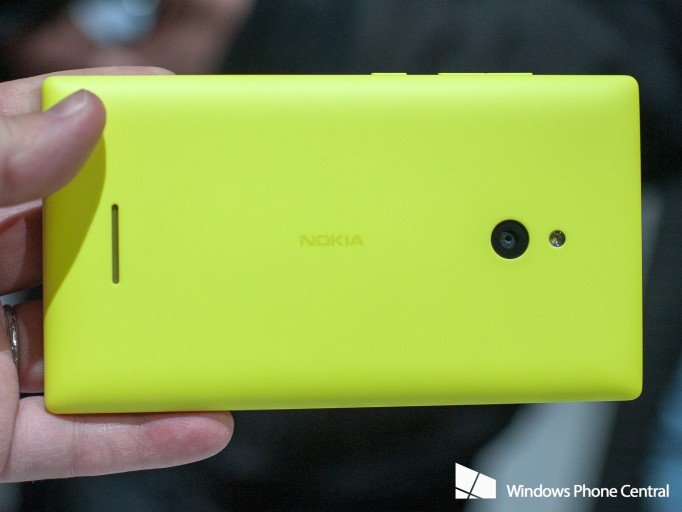Nokia’s shrewd move with the Nokia X undermines Google, bolsters Microsoft

Barcelona – Early this morning, Nokia held their highly anticipated press conference here at Mobile World Congress 2014. Anticipated is the word used because while two new and admirable low-end entry phones were introduced – the Asha 230 and Nokia 220 – all eyes were focused on ‘X’.
Yes, Nokia has gone Android. But if you think that’s all there is to the story, you may be missing the point. We sat down with Jo Harlow, Executive Vice President, Smart Devices at Nokia, for some answers to our eager questions.
If you watched the live stream of Nokia’s presentation on the Nokia X, X+ and XL devices, you may have noticed that their message was crafted perfectly. Yes, the words ‘Android’ and ‘Google’ were used, but Stephen Elop was purposeful in focusing on Microsoft’s services and Nokia’s Lumia line. It was as if they knew that one wrong word could be misconstrued as “Nokia has doubts about Windows Phone” or that this new device series was an admission of failure.
It’s not though. In fact, the Nokia X and what it represents, is an extremely bold and shrewd move. To wit, Nokia is the first and only major phone manufacturer to spurn Google’s Open Handset Alliance (OHA), instead going rogue with the open-sourced Android. It’s kind of a big deal as once you leave the OHA, you don’t get back in. You also lose all of Google’s services. That’s okay though as Nokia and Microsoft have enough of their own services to make up for it. At least, that’s the plan.

“This isn’t just about price”
Windows Phone users though have one question: With the Lumia 520, why does Nokia have to release an Android phone? Is the cost difference that great when the Lumia 520 can often be found under $80?
According to Harlow, the answer is much more… devious. We mean that in a good way, as Nokia have a clear strategy to lure low-cost Android customers onto the Lumia X series. Sure, keeping the price below that of the Lumia line is a goal, but it’s not the driving reason behind the X series. It’s simply to go after a specific market. Owners of dumbphones, Symbian, low-cost Android, etc. are all the target demographic.
Think of the ‘X’ as a transition device to jump from Android to Windows Phone, minus the jarring experience. It’s also, as Harlow notes, a “reaction to the marketplace”, which has changed rapidly in 2013.
All the latest news, reviews, and guides for Windows and Xbox diehards.
By wooing customers with low-cost Android devices to the Lumia X, Nokia hopes that the phone will serve as a gateway to the Lumia line of Windows Phones. That’s their exact intent. You start off with a good Nokia X experience, you finish up with a Lumia one. There’s a specific reason why Nokia made the X look like Lumia, even down to the Tiles that can change sizes and be moved around.
If there was ever a Trojan horse at Nokia, it would be the Nokia X. It runs open source Android 4.1, spurns all of Google’s APIs, and introduces potentially millions to Microsoft’s services. All in the guise of a low-cost Android device. You want a more powerful phone? Here’s a Lumia and look, it has a similar user experience.
It should be clear that Nokia making the Nokia X is not about embracing Android. It’s not about losing faith in Windows Phone. Heck, it’s not even about price (Windows Phone, with new support for the Snapdragon 200 and 400 series will guarantee that).
No, this is about putting a Nokia Lumia in the disguise of Android. It sneaks across the enemy lines and delivers most of the goods in a brave effort to lure deserters.

What’s in a name?
The name ‘X’ was certainly chosen for specific reasons. One of those it being a bit more ‘hip’ for the younger crowd. You have to admit, ‘Nokia X’ does have a ring to it. But the irony is not lost on us seeing a green X phone that is not focused on Xbox, nor from Microsoft.
Will Microsoft kill off X? And what about the future of its name? At this point, you can’t help but wonder if Microsoft did not all but sign off on the strategy. If they didn’t, Nokia sure seemed to appease them. Heck, Skype was even present on stage boasting about the opportunity. And because ‘X’ can’t be trademarked – it’s too generic – transferring the property Microsoft along with Lumia and Asha has no legal work.
That means that yes, the Nokia X will become a Microsoft property and no, we don’t expect them to kill off this project (though they of course could, once they take the reins).
Why buy a Nokia X over a standard Android phone?
Nokia is clearly banking on their name and reputation with the Nokia X. In fairness, the brand Nokia does mean a lot in countries like India and other emerging markets. Combined with the durability of their devices, bright colors and unique UI elements (like Fast Track), Nokia thinks that their differentiated experience will be leaps and bounds better than your run of the mill Android phone.
Indeed, playing with the Nokia X and you would think it was just another Lumia variant. Throw in brand loyalty, some free Skype minutes and access to multiple Android stores (Nokia claims that 75% of all Android apps will run on it without modification) and you have the makings of an interesting device. If the Lumia 520 can sell well running Windows Phone, why not something similar that runs Android apps?
Bringing it all together
While many in Western markets won’t make too much of the Nokia X, as a long-term strategy it’s extremely interesting. It’s audacious. It’s clever. And Nokia worded things just right so as to keep the detractors off kilter during the Q&A period this morning. The Lumia line is and will be Nokia’s primary smartphone platform. No, there won’t be a ‘flagship’ Nokia X device with high end specs.
This is a purposeful move to go after Android users, not to appease them, but to convert them. Will it pay off in the long run? It’s too early to tell, but the ‘next billion users’ are often cited as the only real growth market in mobile these days, and Nokia seems to be betting on that idea.
The Nokia X, a Windows Phone in disguise.

Daniel Rubino is the Editor-in-chief of Windows Central. He is also the head reviewer, podcast co-host, and analyst. He has been covering Microsoft since 2007 when this site was called WMExperts (and later Windows Phone Central). His interests include Windows, laptops, next-gen computing, and wearable tech. He has reviewed laptops for over 10 years and is particularly fond of 2-in-1 convertibles, Arm64 processors, new form factors, and thin-and-light PCs. Before all this tech stuff, he worked on a Ph.D. in linguistics, performed polysomnographs in NYC, and was a motion-picture operator for 17 years.
